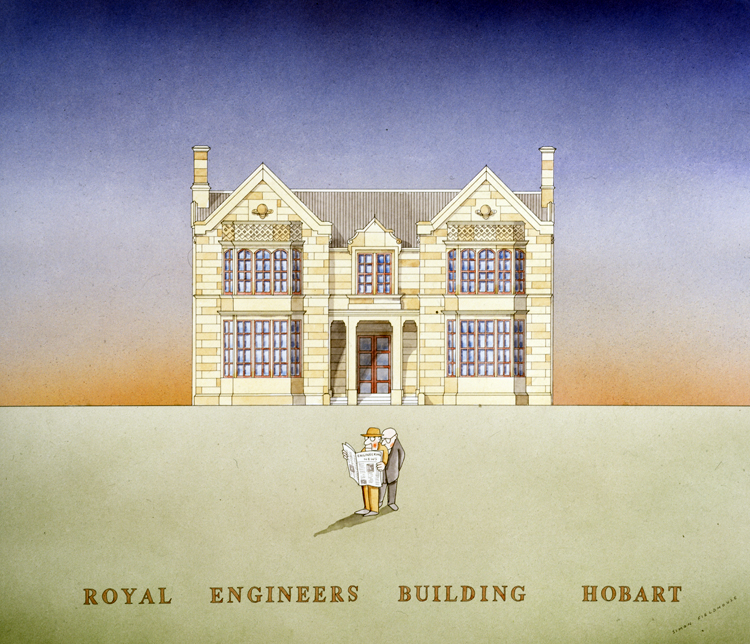
The Royal Engineers Building in Hobart
The Royal Engineers Building in Hobart: A Beacon of Architectural and Cultural Significance.The Royal Engineers Building in Hobart, Tasmania, stands as a testament to the intersection of history, architecture, and cultural significance. This imposing structure, located on Macquarie Street in the heart of the city, has played a pivotal role in the development of Hobart's urban landscape and its cultural heritage. This essay explores the architectural features of the Royal Engineers Building and its cultural importance in the context of Hobart's rich history.
Architectural Marvel
Constructed between 1838 and 1841, the Royal Engineers Building is a fine example of Georgian architecture. It features a symmetrical façade with a prominent central pediment, rusticated ground floor, and elegant columns that define the Neoclassical style. The use of locally quarried sandstone not only adds to its grandeur but also integrates the building seamlessly into the Hobart townscape.
The interior of the building is equally impressive, with spacious rooms and high ceilings. The ground floor housed military stores, while the upper floors served as accommodation for the officers. The building's design showcases meticulous attention to detail, reflecting the military precision of its original occupants, the Royal Engineers.
Cultural Significance
The Royal Engineers Building holds significant cultural importance for Hobart, Tasmania, and Australia as a whole. Firstly, it is a tangible link to the early colonial period of Australia. As one of the oldest government buildings in Tasmania, it offers a glimpse into the challenges and aspirations of the settlers who sought to establish a new British colony on the island.
Moreover, the building symbolizes the strategic significance of Hobart as a British military outpost during the 19th century. It was crucial for the protection and administration of the colony, which had been established as a penal settlement. Its history is entwined with the broader narrative of convict transportation, colonial expansion, and the efforts to exert British influence in the region.
In addition to its historical significance, the Royal Engineers Building has been a center for cultural events, including art exhibitions, lectures, and public gatherings. This role has transformed it into a focal point for the community, allowing it to continue to contribute to the cultural fabric of Hobart.
Conclusion
The Royal Engineers Building in Hobart is an architectural gem that encapsulates the history and culture of Tasmania and Australia. Its elegant Georgian design and historical importance make it an essential part of Hobart's built environment. As it stands today, the building is a testament to the resilience and vision of those who built it, a symbol of early colonial aspirations, and a site that continues to play a vital role in the cultural life of the city. Its preservation and appreciation serve as a reminder of the rich tapestry of Australia's past and the enduring importance of architectural heritage.